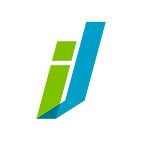Algorithmic trading with cryptocurrencies is gaining popularity today. Let’s see how effective it is and whether it should be used by new traders.
Algorithmic trading is a method of executing a large order (too large to fill all at once) using automated pre-programmed trading instructions accounting for variables such as time, price, and volume to send small slices of the order (child orders) out to the market over time.
Algorithmic trading is usually used by investment banks, hedge and mutual funds, because these institutional investors in their activities operate with large volume orders and therefore cannot place such large bids on the market entirely without the risk of loss.
Today, 84% of transactions in the world markets are made using high-frequency trading tools (high-frequency trading) — the main type of algorithmic trading, in which specialized programs automatically look for opportunities to earn money, sell and buy positions. In other words, the main persons involved in the process are robots, and in most cases they do business with each other.
Algorithmic trading systems are used both by professionals, and by simple owners of cryptocurrencies who are trying to increase their capital. There are three main categories of cryptographic software for Algorithmic trading:
- bots with pre-written logic;
- learning trading robots based on machine learning;
- robot advisors.
However, they are a regular program or script that acts on the basis of the triggers provided for it and their combinations. As a result, for effective work it is required to regularly make marks to the logic of the bot. Income is completely passive.
Algorithmic trading has the risks of software, hardware or human mistakes that can lead to the “over-execution” of the application. This effect is called runaway algo, when, for some reason, the algorithm starts to send suborders incorrectly: at the wrong price, at the wrong time, not for that security or without measuring the execution of the previous sub-orders.
As an example, the events of August 1, 2012 (included in the history of trading named Knightmare) on the New York Stock Exchange, when the updated algorithmic engine of the Knight Capital Group company due to errors in the configuration and installation for 45 minutes, put up bids for the purchase of 3.5 billion US dollars and bids for the sale of 3.15 billion US dollars. Because of this actions of the software, the market for some shares has shifted by more than 10%. The net loss suffered by Knight Capital was $ 460 million. The next day, the company declared bankruptcy.
Smart robots
Now there are also more complex systems for algorithmic trading with cryptocurrencies, and it seems that this is the future. Such solutions use “smart” algorithms and are capable of self-learning. They are based on neural networks and machine learning methods that increase the depth and efficiency of analysis. Such products are more expensive and more difficult to operate.
Among such interesting projects in the field of “intellectual” automation of crypto-trading are Signals software. According to the creators, this software will change the algorithmic trading on digital asset exchanges. The service is a platform on which you can create your algorithms for algorithmic trading and signals by which trading software should take action, and then use them in practice with the use of machine learning algorithms. In addition, users can earn on their signals — share them with other Signals customers in exchange for SGN tokens.
Is it worth to use Algorithmic trading?
On the one hand, algorithmic trading has a lot of advantages. On the other hand, it is definitely not a panacea, especially for beginners. From the point of view of identifying insights in large data arrays and speed of response, algorithms using big data analysis, neural networks and machine learning are out of competition. However, many automated trading systems have drawbacks besides those listed earlier, for example:
- conclusions are made only on the basis of positive results;
- remake and correct trading strategies based on detected patterns;
- do not take into account the broader market context and rely only on data from trades.
It is necessary to take the fact that the efficiency of the system will be difficult to predict and, especially, to guarantee. We must not forget that the grandees of high-frequency trading, including Jump Trading and Tower Research, have come to the world of cryptocurrency, and artificial intelligence trading platforms are constantly being improved.
Today, robot trading solutions are at least capable to free a person from the routine, offering him trading strategies, insuring against the loss of capital during market fluctuations. Absolutely it makes sense to try in the business of robot advisers.
Telegram channel
Telegram chat room
Bitcointalk
Facebook
Twitter
YouTube
Reddit
Steemit
